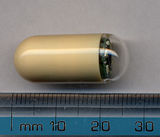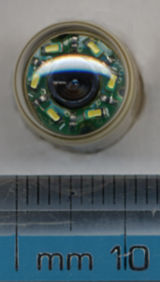Capsule Endoscopy


Capsule Endoscopy is a term used to describe a miniature capsule used to record images through the digestive tract for use in medicine. Capsule endoscopy has other names such as Wireless capsule endoscopy, Miniature Ingestible Capsule, and is marketed as EndoCapsule by Olympus Corp. and PillCam by Given Imaging Ltd. The capsule contains a small camera that retains images of the gastrointestinal tract after the user has swallowed it. It is used as a less-invasive procedure in placement of a traditional endoscope, which is a long, thin tube inserted into the rectum and transversed through the colon or into the oral cavity. The technology is used by gastroenterologists to detect diseases such as Crohn's disease, gastric ulcers, and colon cancer. Because the capsule is swallowed and travels through the digestive system, capsule endoscopy takes a longer amount of time than traditional endoscopy.
Recent developments
Much research is occurring in the United States, Israel, Japan, South Korea, and United Kingdom to improve capsule endoscope technology. Sayaka Capsule by RF System of Japan is an advanced capsule with power supplied wirelessly from an external source. [1] In Japan, capsule endoscopy is now approved for use in the small bowel and in Europe, capsule endoscopy is being used for several areas including colon screening since July, 2007.